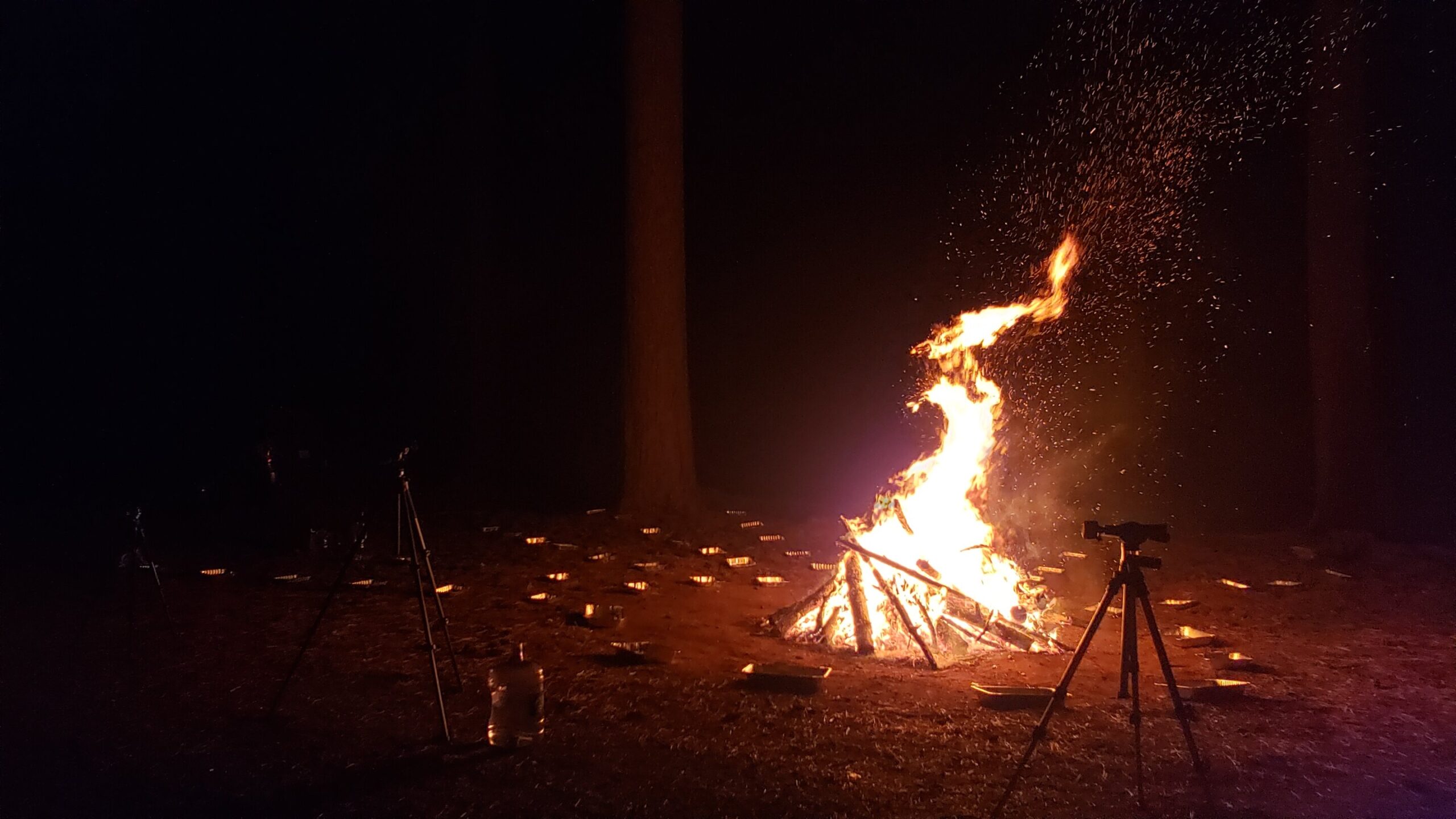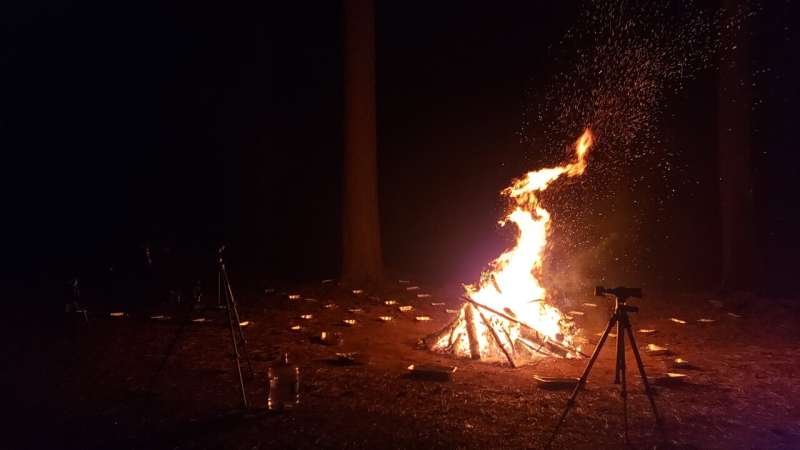

In the chaos of a wildfire, heat, wind, flames and fuel interact to produce embers that are lofted into surrounding areas, starting new spot fires and spreading destruction and property loss in California’s wildland-urban interface.
Researchers at the University of California, Irvine have conducted first-of-their-kind field experiments to better understand the physics of these firebrands, and their results can help authorities better model the outcomes of disasters that are happening with greater frequency in a warming climate.
In a paper published in the journal Physics of Fluids, UC Irvine team members describe their setup at the UC Berkeley Blodgett Forest Research Station in California’s Sierra Nevada mountain range. They built a burn pile of wood from ponderosa pine and Douglas fir trees, including branches and needles—materials that are the main fuel supply in Sierra wildfires.
During nighttime experiments, the researchers used high-speed imaging instruments to track flame evolution and dynamics over roughly 20 minutes. They monitored the course of embers produced by the fire via a particle tracking velocimetry technique that provides valuable information by following particle trajectories, enabling the study of flow dynamics and turbulence at high resolution.
The scientists spread an array of sheet pans containing water around the fire, allowing them to collect firebrands cast out from the flames for later characterization of their size, shape and density in the laboratory.
“Climate change is making wildfires larger and more complex, and our development patterns in the wildland-urban interface mean that these blazes are causing damage that’s directly impacting people living in these areas, both financially and in terms of personal safety,” said co-author Tirtha Banerjee, UC Irvine associate professor of civil and environmental engineering.
“Experts have long sought to understand the role of embers in the spread of fires. Our team has made a major contribution by drilling down into the physics and kinematics of firebrand propagation using advanced instruments and techniques.”
The researchers also studied the rate at which embers were generated in the high-temperature plumes. Computer simulations are programmed to assume that firebrand propagation is tied to fire intensity, but Banerjee’s group found that ember creation is highly intermittent, occurring in large bursts that can hurl fire-starting debris far from the source in a way that’s difficult to predict.
“Present models can underestimate the potential for large firebrands to be lofted and transported greater distances due to simplifications that are being made about fire plumes and the shape of embers,” said lead author Alec Petersen, a UC Irvine postdoctoral scholar in civil and environmental engineering.
“We hope our study will provide valuable experimental data from a realistic field setting for assessing those sorts of assumptions and parameterizations in future modeling efforts.”
He said that intermittency in the fire plume and ember generation rate is often neglected in firebrand transport models concerned with the most likely distance an ember of a certain size will travel.
“What gets ignored are events where bursts of relatively large embers are ejected simultaneously with strong, turbulent updrafts from the plume. These are the statistically rare events that could be responsible for lofting those embers with the most potential to light spot fires farther than one might otherwise predict,” Petersen said.
“Given enough chances, such rare events become probable, and wildfires emit billions of embers. It only takes a single one to light a spot fire, so accounting for these intermittent effects could improve risk calculations for where new fires might spring up.”
The field experiments at the Blodgett Forest Research Station were conducted with the assistance of UC Berkeley professor Rob York.
More information:
Alec J. Petersen et al, Characterizing firebrands and their kinematics during lofting, Physics of Fluids (2024). DOI: 10.1063/5.0227024
Provided by
University of California, Irvine
Citation:
Scientists track and analyze lofted embers that cause spot fires (2024, October 10)
retrieved 10 October 2024
from https://phys.org/news/2024-10-scientists-track-lofted-embers.html
This document is subject to copyright. Apart from any fair dealing for the purpose of private study or research, no
part may be reproduced without the written permission. The content is provided for information purposes only.